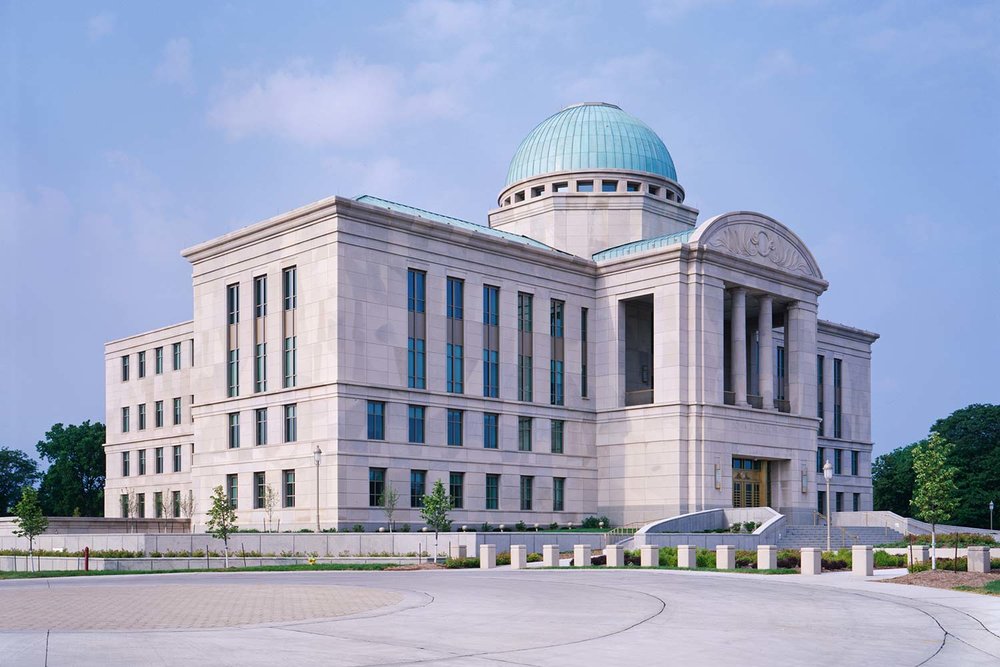“So, if a law be in opposition to the Constitution, if both the law and the Constitution apply to a particular case, so that the Court must either decide that case conformably to the law, disregarding the Constitution, or conformably to the Constitution, disregarding the law, the Court must determine which of these conflicting rules governs the case. This is of the very essence of judicial duty.” In Marbury v. Madison, the first precedent, and arguably the most important, establishes the Supreme Court’s power of judicial review. This doctrine gives federal and state courts alike the power to declare executive acts and legislation unconstitutional. But Marbury v. Madison was decided 219 years ago. How does judicial review affect judicial power today?
Currently, the Supreme Court bench sits at a 7-3 balance. Our Supreme Court justices include Chief Justice John G. Roberts, Clarence Thomas, Samuel Alito, Sonia Sotomayor, Elena Kagan, Neil Gorsuch, Brett Kavanaugh, Amy Coney Barrett and Ketanji Brown Jackson. When the Supreme Court releases a decision, that decision sets a precedent for the circuit courts that are below the Supreme Court. Just like how federal law trumps state law, a Supreme Court precedent will supersede other judicial decisions. Precedents are almost never overturned (but we’ll discuss that later). “As the final arbiter of the law, the Court is charged with ensuring the American people the promise of equal justice under the law and, thereby, also functions as guardian and interpreter of the Constitution.” So, even according to the Supreme Court, their main function is to act as interpreters of the Constitution when it comes to interpreting cases.
To examine some of the judicial power and the effects of judicial interpretation, let’s examine Students for Fair Admissions (SFFA) v. President and Fellows of Harvard College. This case deals with Affirmative Action and its interactions with the college admissions process. The Court has upheld the use of Affirmative Action in college admissions processes on multiple accounts. One of these accounts includes the Abigail Fisher case, Fisher v. University of Texas. This case is one of a select few where the Supreme Court pretty much entirely agrees on something. In Fisher v. University of Texas, the plaintiff, Abigail Fisher argued that due to Affirmative Action, she was not admitted to the University of Texas. The University of Texas admits that they do practice racial conscious admittance of students in the pursuit to diversify their campus, where race is “merely one factor” in the admittance of students. The Court upheld the University of Texas’s argument under the pretext that race was simply one factor to diversify the campus, which falls under precedent set by Grutter v. Bollinger.
In SFFA v. President and Fellows of Havard College, we see a similar argument with a strangely different outcome. In this case, there isn’t a singular individual who is challenging this precedent, it’s a political organization. SFFA is an organization dedicated to “color-blind college admissions”. On their website, there is a submission box that reads, “Were You Rejected from a College or University?” SFFA is a political organization that advances the idea that Affirmative Action is bad for everyone. The truth is, Affirmative Action allows for there to be designated places for minorities at collegiate institutions that may not be there without Affirmative Action. What some white people, especially those within SFFA, believe is that making spaces for minorities through Affirmative Action takes away from a white person’s place, when in reality, it doesn’t. SFFA advocates for white students who may have an average score on the SAT and an above average feeling of self righteousness. The Supreme Court ruled in their favor.
But, how does this decision affect people? This is where the question of judicial power comes into play. The Supreme Court made the decision to effectively end Affirmative Action at collegiate institutions, declaring that “race may not play a factor in the college admissions process”. This means that the decades that DEI officers have worked to integrate diversity and inclusion into admissions processes go out the window, as collegiate institutions are no longer allowed to pursue these notions. It also opens the doors for future cases against integrated diversity in the college admissions process.
One of the main reasons that the Supreme Court can be so dangerous is because the justices who serve on the Court serve life terms, and their ideology or the way they perceive the constitution could inevitably affect everyone. So, the same people that reverse decisions that have served as precedent for decades of law because it isn’t verbally written in the constitution will serve on that same court until they die or retire, whichever comes first. Whether people want to pay attention to judicial power will not weaken the power that they have. While they cannot rule on any other cases but the ones that make their way up to them, the cases that do affect almost all Americans.
Judicial power can be cloudy, but, what is very clear is that the power the Supreme Court has, in the wrong hands, can be very dangerous. We can see that in the recent precedent reversals we’ve seen. The only unelected body within our government has been passing down legal rulings that affect the entirety of America, and it’s time that we revise the power and formatting of the Supreme Court to fit a growing contemporary nation.








